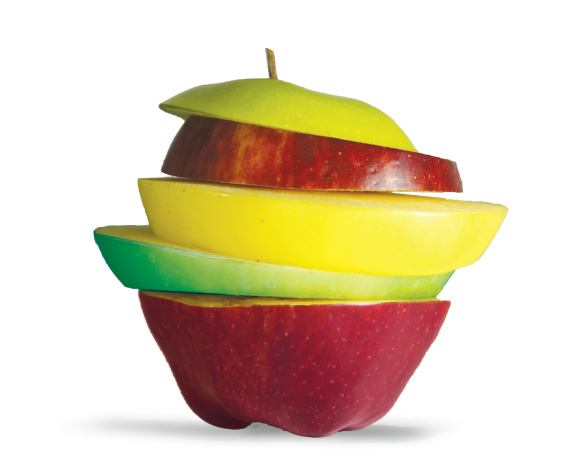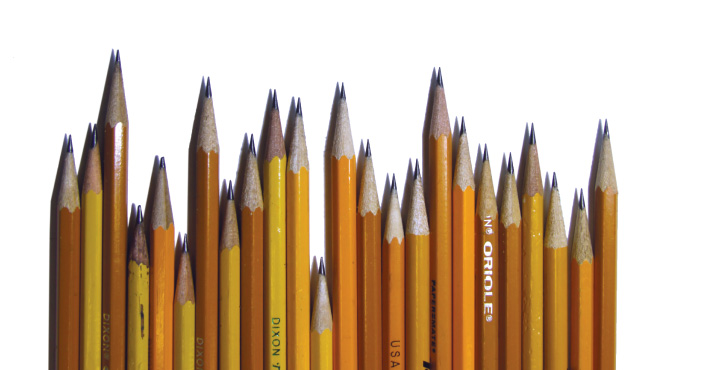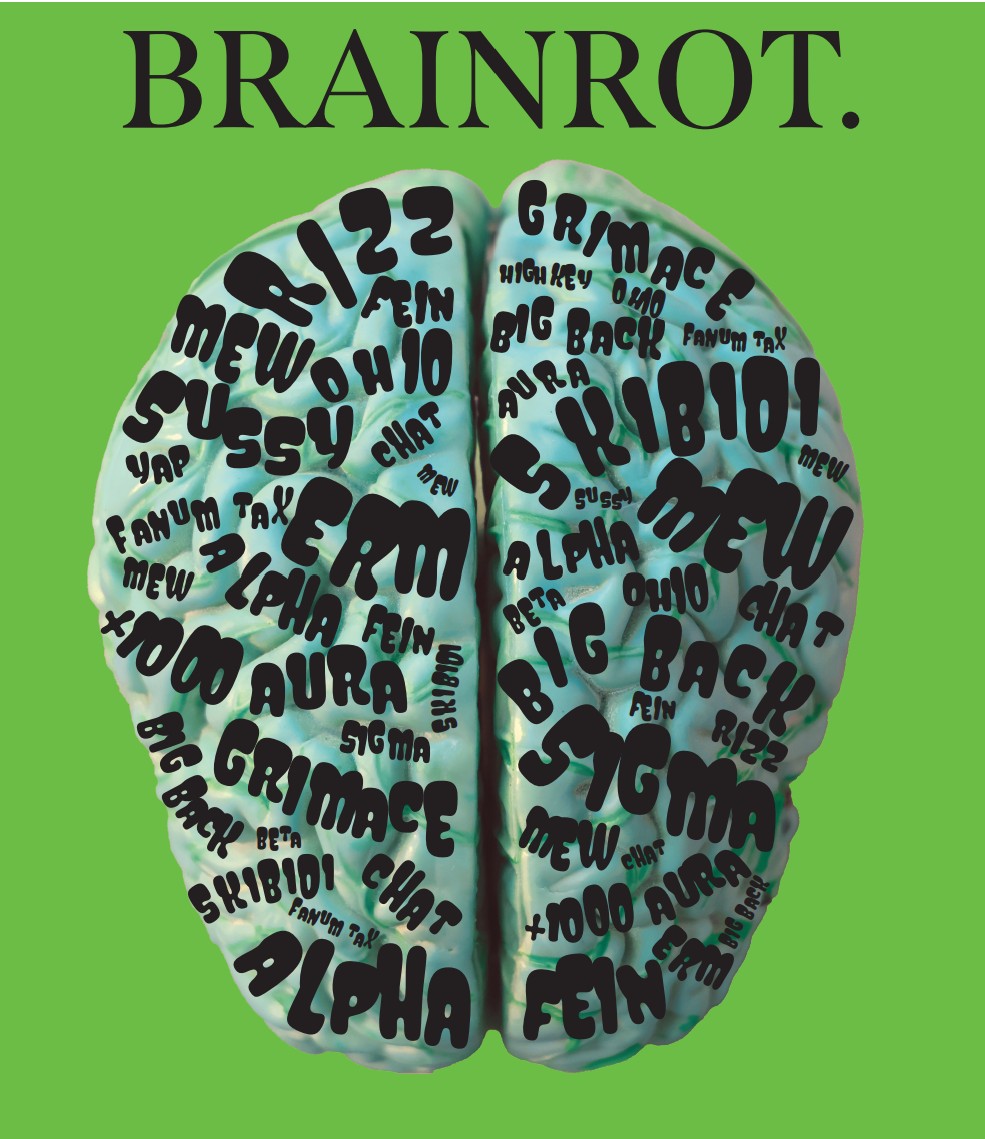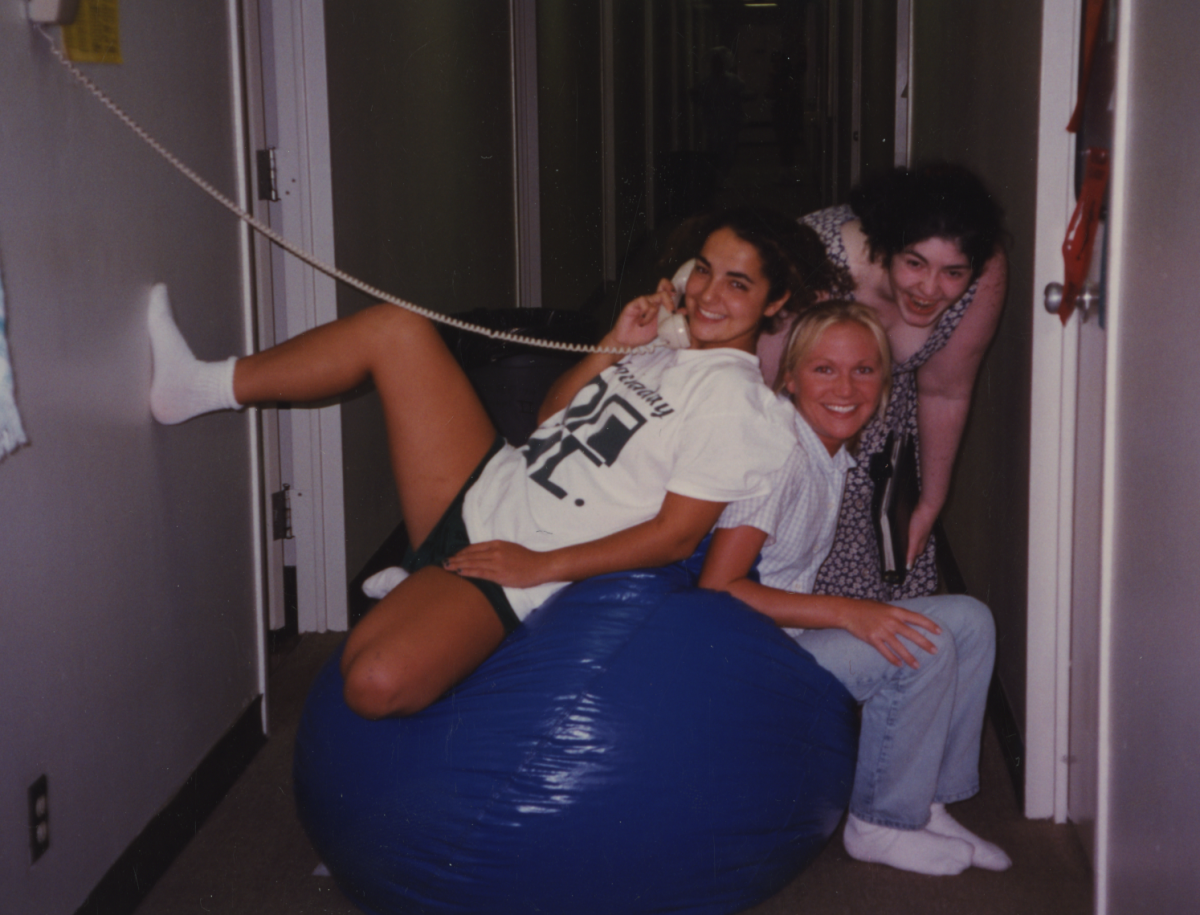
In the classroom in the English hallway, 12 girls sit in a large, silent circle surrounding a smaller ring of four who talk among themselves. Next door, girls sit at desks arranged in an oval shape, the teacher seemingly removed from the discussion. Further down the hall in a history classroom, the teacher stands near the SMART board, lecturing to rows of girls typing furiously. Across campus in the science building, students scramble to review notes before taking their daily quiz. This hypothetical moment provides a snapshot of the teaching styles used daily at Hockaday. While some teachers continue to employ traditional methods and classroom set-ups, many have recently implemented new techniques to improve and change up the classroom dynamic.
Lecture-based Discussion
A typical class with History Department Chair Steve Kramer class comprises of a long lecture with discussion questions thrown in, followed by brief in-class writing and occasionally a video at the end.
Lecturing helps Kramer flesh out a topic when it falls outside students’ personal experiences.
“It’s the easiest way to convey a message and an easy way to setup questions for kids,” Kramer said.
Kramer keeps lectures interesting and engaging by asking questions and involving students in discussions. Junior Mollie gained confidence through being put on the spot.
“You had to think about the information and analyze it right when you learned it, not later before the test. It also kept you very attentive in class and during your homework readings.”
A fellow lecturer, history teacher Lucio Benedetto employs the method for AP classes as students are in a time crunch.
When he lectures in APUSH, Benedetto tries “to insert as much discussion as I can… to make it more conversational rather than just straight talking.”
Inner/Outer Circle
In her freshman and sophomore classes, English teacher Calli Birch removed the teacher from the center of the classroom, focusing on the students and their discussions. Birch learned this method, called an Inner-Outer Circle Discussion, from a friend of her father’s, a psychology professor, after expressing her “frustration with trying to generate more lively discussions in the classroom” at a family dinner party three years ago.
In this discussion, the girls are split into groups of four and assigned a topic of focus (theme, character, important idea etc.) culled from the literature they have read. The initial group to occupy the center of the circle must have a full discussion about their subject for however long the teacher deems necessary. Only girls in the inner circle are allowed to talk until the teacher opens up the discussion, where girls from the outside can “tap” into the middle, and switch out.
Sophomore Madison enjoys the Inner-Outer Circle discussions because they are “more productive,” allow quieter girls “the opportunity to speak more,” and give students a “more in-depth look at something we may have overlooked in a different situation.” Natalie calls the inner-outer circle a “new and innovative way of discussing literature” which prevents “the interruptions that happen in a whole class discussion.”
Harkness
The Harkness method relies primarily a piece of furniture: a large, oval table, similar to the one in Dr. Andre Stipanovic’s Latin classroom. In the Harkness method, the teacher sits apart from the students, abstaining from speaking during discussion. History teacher Tracy Walder describes it as a “student-centered, discussion-based learning.”
Its founder, Edward Harkness, made a donation to Phillips Exeter Academy in New Hampshire in the 1930s, with the stipulation that the funds establish “a new educational method that would involve all students in the learning process,” according to Exeter’s website.
Walder traveled to Exeter this past summer from training in the methodology and began implementing it in her APUSH classes at the start of the second semester, interspersed with her usual lecturing.
The English department has utilized this platform for years because “English is the most conducive to that kind of discussion,” said Walder, but “it’s relatively new for history.”
She likes the Harkness because “it’s all driven by the students. The students come up with the questions. The students ask the questions. The students are really the sole participants in the discussion.”
Junior Natalie enjoys the Harkness method because “we can put ourselves into it and develop opinions which help us really understand the history, rather than just studying what happened.”
English teacher Janet Bilhartz attended the same conference in 2003, and has used “some part of [the Harkness method] almost every day,” especially with the junior honors class. She appreciates the technique because it “gives the students the ownership of their learning” and allows the girls to “take it where they want to go and talk about the things that interest them.”
Bilhartz proposes a question to the girls, who then respond first in their notebooks, and then through discussion. “It’s a way for the quieter and shier students to get involved as well… everyone has already written an answer down.”
Junior Margaret who usually just likes to “sit there and absorb the information” in Walder’s class, appreciates that the Harkness method “encourages everyone in class to speak up. It’s even okay to share a wrong idea, because each thought, whether it’s wrong or right, will lead the class into finding the answer that they are looking for.”
Junior Laura-Brynn takes classes in the Harkness style from both Walder and Bilhartz. She enjoys the “independence it gives the students… it allows us more freedom in what we talk about.” With her teachers “helping and guiding,” the students are able to “discover the deeper meaning of the text and the real world application,” said Laura-Brynn.
Blended Learning
Senior Sarah loads Upper School science teacher Murry Gans’s webcast on Haiku for a final viewing as she sits down to eat her breakfast. The daily quiz starts in 45 minutes, but that’s plenty of time to review the nine minute video. Although a student in Barbara Fishel’s AP Biology class, Sarah, and all AP Biology students watch Gans’s videos.
These videos allow Sarah to “visually learn the information,” and “re-watch them anywhere and at anytime.”
The flipped classroom, also known as “blended learning” in action. Students watch videos or recordings of the lecture in class as homework and then spend class time doing practice problems, asking questions and doing labs.
A report published by Knewton reported that two Colorado teachers developed the method in 2007 as a way to record lessons for students who missed class. It has since spread across the country, and to the Hockaday community.
Gans implemented elements of blended learning last year for his AP Biology, Human Evolution and Genetics classes, but began using it exclusively this school year, allowing him to condense his 60 to 80 minute lectures into 10 minute webcasts.
Gans noticed “much more interesting and interactive” class discussions since the switch because his students have already learned “the stuff that’s really obvious.”
Four years ago, math teacher Janet Reeves started maximizing by separating notes into what was lecture-based and what required solving, Reeves made preview videos of the lecture content for the girls to watch each night for homework, and noticed an immediate change.
Her previous system “just didn’t have enough time to do everything. By switching around, it’s just completely freed up the class since I can assume that the students already have knowledge,” said Reeves.
Junior Chloe, a student in Reeves’ pre-calculus class, appreciates the class videos.
“We can spend class time discussing the application of concepts instead of wasting time copying down information.”
The trend grows: 18 teachers expressed interest in learning how to incorporate blended learning in their classrooms, and Gans plans to hold informal discussions to teach them how to apply the method over the next semester. He predicts that Haiku, the learning management system currently used by some science, history and English classes, will spread school wide next year.
“As teachers, regardless of what method or style you use, you always try to assess how it engages the students in a meaningful way. Because different methods appeal to the different ways students learn, it is helpful to use a variety approaches. But regardless of the style, the critical question to ask as a teacher is whether the students grasp the key concepts and apply what they’ve learned in new way,” said head of upper school John Ashton. “The methods are just ways to help students get to that point of understanding.”
– Megan













